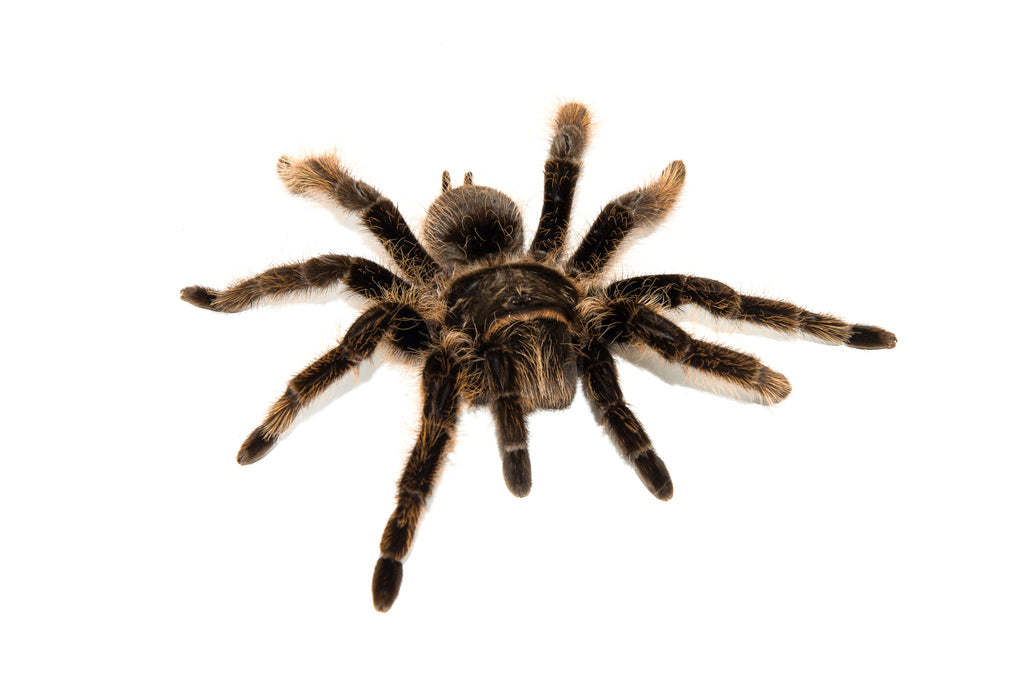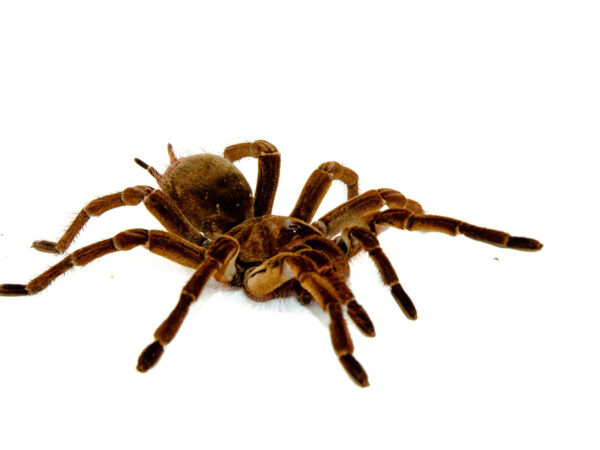Curly Hair Tarantula (Brachypelma albopilosus): The Ideal Beginner Species
The Curly Hair Tarantula (Brachypelma albopilosus) is widely regarded as one of the best tarantulas for beginner keepers. With its calm temperament, low-maintenance care needs, and attractive fuzzy appearance, this terrestrial species is both charming and manageable for enthusiasts of all experience levels.
Appearance and Distinctive Features curly hair tarantula (brachypelma albopilosus)
True to its name, the Curly Hair Tarantula has long, bristly hairs that curl outward from its body and legs, giving it a unique and fluffy look. These hairs range from light brown to golden, with a darker base color on the body that makes the curls stand out under good lighting.
Quick Facts:
-
Size: 5.5 to 6 inches in leg span when mature
-
Lifespan: Up to 20+ years for females; 5–7 years for males
-
Color: Dark brown/black base with golden-curled setae (hairs)
This tarantula doesn’t have flashy colors like some other species, but its appearance is soft, inviting, and very distinctive in a collection.
Temperament and Behavior
The Curly Hair Tarantula (Brachypelma albopilosus) is known for its extremely docile nature. It rarely flicks hairs or shows aggression, making it suitable for handling, although handling is generally discouraged for all tarantulas unless absolutely necessary.
Behavior Traits:
-
Calm and slow-moving
-
Burrows occasionally but often stays visible
-
May flick urticating hairs if stressed
-
Tends to remain near its hide or in the open
Because of its gentle demeanor, this species is often used in educational settings or as a first tarantula for young enthusiasts under supervision.
Housing and Enclosure Setup
Caring for a Curly Hair Tarantula is relatively easy, as it doesn’t require complex environmental conditions. A standard terrestrial tarantula enclosure with enough floor space and proper substrate is sufficient.
Enclosure Tips:
-
Minimum size: 12″ x 12″ x 8″
-
Substrate: 3–5 inches of coco fiber or soil for occasional burrowing
-
Temperature: 72–78°F (room temperature works fine)
-
Humidity: 60–70% (misting once per week is often enough)
-
Include: A hide (cork bark or half log), shallow water dish, and some decor
Ventilation is important to avoid mold, especially if you keep the substrate slightly moist for humidity control.
Feeding and Diet
This species isn’t picky when it comes to food. The Curly Hair Tarantula is a great eater and will happily take down appropriately sized prey with enthusiasm.
Feeding Guidelines:
-
Juveniles: 2–3 small crickets or roaches per week
-
Adults: 1–2 medium-sized prey items per week
-
Options: Crickets, dubia roaches, mealworms, superworms
It’s common for them to fast during pre-molt, which can last several weeks. Remove uneaten food after 24 hours to prevent stress or harm.
Molting and Growth
Like all tarantulas, the Curly Hair Tarantula (Brachypelma albopilosus) grows by shedding its exoskeleton. This process, called molting, becomes less frequent as the spider matures.
Signs of Molting:
-
Refusal to eat
-
Dull coloration
-
Lethargy or retreating to a hide
-
Lying on its back (not dead—just molting!)
After a molt, allow at least 5–7 days before offering food again to avoid damaging their soft, new exoskeleton.
Why Keep a Curly Hair Tarantula?
There are many reasons hobbyists love the Curly Hair Tarantula. It’s not only easy to care for, but it’s also long-lived and tolerant of a range of conditions. Whether you’re a beginner or an experienced keeper, this species makes an excellent display animal.
Top Benefits:
-
Low-maintenance and hardy
-
Docile and easy to manage
-
Visually interesting with its curly setae
-
Rarely hides for long periods
It’s also a relatively affordable species and is commonly available through breeders and exotic pet shops.
Final Thoughts
The Curly Hair Tarantula (Brachypelma albopilosus) is a staple in the tarantula hobby—and for good reason. Its ease of care, mellow nature, and adorable “fluffy” look make it one of the best choices for keepers of all skill levels. Whether you’re just starting your journey or adding to an existing collection, this species offers a delightful experience.









Reviews
There are no reviews yet.